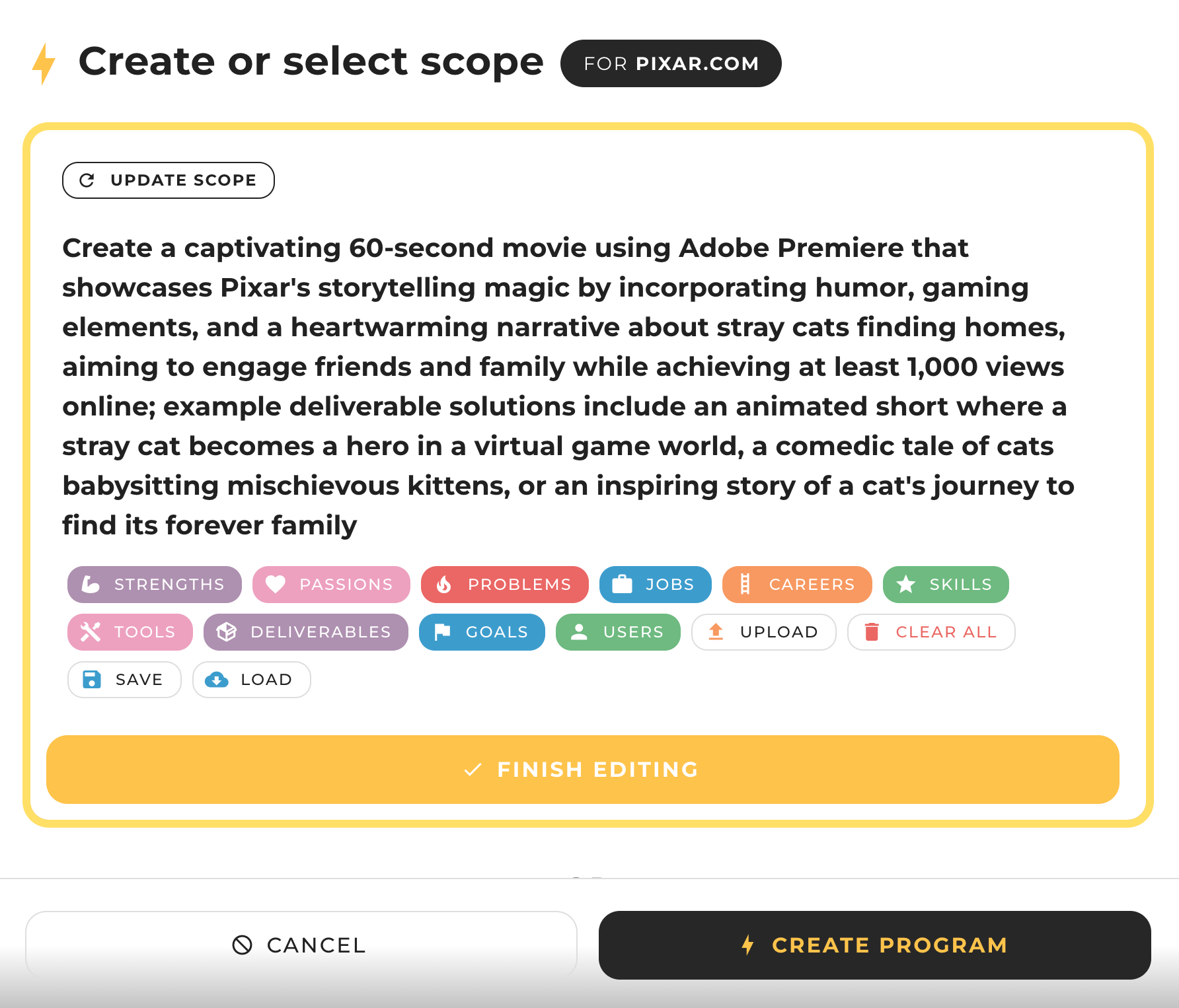Maximizing Student Motivation with PilotCity.com

Motivation is the spark that ignites learning. It drives students to engage, persevere, and grow. When students feel motivated, they connect deeply with their tasks, overcome challenges, and develop the resilience to achieve their goals.
At PilotCity.com, we’ve seen this transformative impact firsthand. With over 15,000 participants, 700 internship alumni, and partnerships with 150+ schools, our programs combine Project-Based Learning (PBL) and Work-Based Learning (WBL) to create real-world experiences that inspire students to care about their futures.
Our findings are clear: Motivation matters. Real-world learning, offering choices, and personalization are key to helping students connect with their passions and validate their career paths. This insight inspired us to develop tools that unlock motivation through hyper-personalized learning experiences.
Real-World Learning at Work
To understand the power of hyper-personalization, consider this example of a student aspiring to work with Pixar:
Default (Pre-Personalized) Scope:
“Develop an innovative animated short film for Pixar that captivates audiences by achieving a 20% increase in viewer engagement among teenagers and families, leveraging cutting-edge animation techniques and storytelling methods.”
While this default scope aligns with Pixar’s goals, it’s broad and not tailored to the student’s interests. By applying 10 key personalization options, the student can transform this scope into something uniquely motivating and relevant.
10 Ways to Make Learning Personal
1. Strengths – What are you good at?
Highlighting personal strengths makes projects more achievable and builds confidence.
- Example: A student identifies their strength as “making people laugh” and incorporates humor into their animated short film to create a memorable and engaging narrative.
2. Passions – What do you love doing?
Passion fuels long-term commitment.
- Example: If the student loves “gaming,” they might explore how gaming elements, such as character-driven quests or world-building, could inspire their project.
3. Careers – What career paths are you exploring?
Even if unsure of their exact path, students often have broad aspirations.
- Example: A student interested in “exploring being an influencer” could focus on creating content that showcases storytelling techniques popular among online creators.
4. Tools – What tools will you use?
Choosing familiar or aspirational tools empowers students to build skills they can showcase.
- Example: The student selects “Adobe Premiere,” an industry-standard tool, to build skills relevant to video production.
5. Skills – What skills will you use or develop?
Students can choose to apply or enhance their skills.
- Example: A student focuses on “telling a story” to practice narrative-building techniques and improve their ability to communicate ideas.
6. Jobs – What can you get paid for?
Prior experiences, even unrelated ones, can inspire creativity.
- Example: If the student worked as a “babysitter,” they might create a story about caregiving, such as animated characters solving challenges while taking care of mischievous kittens.
7. Deliverables – What work products will you create?
Setting clear deliverables keeps students focused.
- Example: The student decides to produce “a short 60-second movie,” ensuring the project is manageable and achievable.
8. Users – Who is your user or customer?
Understanding the audience helps students craft relatable projects.
- Example: If the target audience is “friends,” the student might design their film to resonate with peers, creating something fun and shareable.
9. Problems – What does the world need?
Tackling a real-world issue adds depth to a project.
- Example: A student passionate about animals might choose to address “stray cats” and incorporate this theme into their animated story to inspire empathy and action.
10. Goals – What objectives will you achieve?
Linking the project to personal aspirations increases motivation.
- Example: A student with the goal of “helping my family make money” could create content that garners online attention, showcasing their potential to future employers.
The Personalized Learning Journey
Updated Scope:
“Create a captivating 60-second movie using Adobe Premiere that showcases Pixar's storytelling magic by incorporating humor, gaming elements, and a heartwarming narrative about stray cats finding homes, aiming to engage friends and family while achieving at least 1,000 views online; example deliverable solutions include an animated short where a stray cat becomes a hero in a virtual game world, a comedic tale of cats babysitting mischievous kittens, or an inspiring story of a cat's journey to find its forever family”
This personalized scope aligns with the student’s strengths, passions, and goals, creating excitement and drive to complete the project.

Why Personalization Works
- Motivation: Students feel deeply connected to their projects because they reflect their personal interests and goals.
- Clarity: Personalization makes tasks actionable and manageable, reducing overwhelm.
- Ownership: Students become independent experts, fully responsible for their unique projects.
- Innovation: By aligning projects with individual strengths and passions, students create solutions that are both creative and impactful.
Empowering Students, Transforming Classrooms
At PilotCity.com, we’re pushing the boundaries of real-world learning by enabling students to create their own program models, tailored to their goals. Whether brainstorming ideas, building portfolios, or pitching to employers, our platform gives students the tools to take control of their learning journey.
Teachers can also integrate this personalization into their classrooms, blending curriculum with student interests for a win-win approach. Together, we’re empowering students to connect deeply with their work and prepare for real-world success.
Tackling the Student Engagement Crisis with Personalization
With student engagement at historic lows, hyper-personalized projects provide a fresh approach. By aligning learning with real-world opportunities and personal goals, we’re helping students find their “why” and empowering them to thrive in the classroom and beyond.
Let’s build the future, one personalized project at a time.
Explore more at PilotCity.com.

Contribute to the raw draft here
